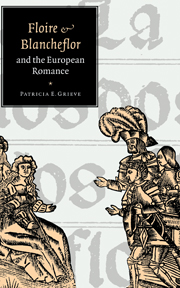Preface
Published online by Cambridge University Press: 15 December 2009
Summary
This study began as a seminar assignment in a graduate class, a comparison of the sixteenth-century Spanish prose romance Historia de los dos enamorados Flores y Blancaflor with the two French poems traditionally presumed to be closest to a lost French original, and from which the Spanish version was purportedly translated.
Bibliographical research for the class assignment went almost too swiftly, for no one had written anything on the Spanish text except for Bonilla y San Martín in the general introduction to his edition. This is, of course, not a new situation in Hispanic literary studies. A.D. Deyermond's oft-cited article on “The Lost Genre of Medieval Spanish Literature” called attention to Hispanists’ frequent disregard for “translations” in general and the romance in particular. Dieter Mehl pleaded the case for Middle English romances that suffered similar scorn from the pens of those who compared them unfavorably with the French “originals”: “It is worth asking, however, whether the English romances are no more than mere translations and whether, in addressing a completely different audience, the English authors did not create a new literary type that should be judged by other standards than the French ‘originals’”
At first, my intention was to write an article rescuing the Spanish prose romance from near-oblivion, but Butler Library's interlibrary loan provided me with José Gómez Pérez's article, “Leyendas medievales españolas del ciclo carolingio,” from an obscure and now defunct Venezuelan journal.
- Type
- Chapter
- Information
- 'Floire and Blancheflor' and the European Romance , pp. xi - xivPublisher: Cambridge University PressPrint publication year: 1997
- 1
- Cited by

